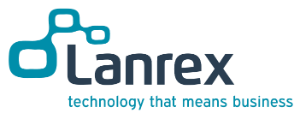Do you find yourself working in a more "traditional" workplace — one where collaboration is often slow and laborious? It's a question that a lot of business leaders are asking themselves these days and luckily, it's also one with an easy answer.
If the aforementioned question describes your situation, the problem isn't your people. It may be the technology they're being forced to use. In that type of situation, implementing a collaborative communications model will do more than just transform your workplace from a technological point of view. It will help your employees work together, faster, and smarter than ever before. It's an idea at the heart of digital transformation for many organisations and because of that, it's one that you'll want to pay attention to.
The process itself, however, is not as simple as flipping a light switch. It's one that must be thought out, calculated, and heavily considered at all times. Therefore, if you really want to increase your team's productivity with technology, there are a few key things you'll want to keep in mind.
1. Everything Begins With an Inventory
If you truly want to increase your team's productivity with technology, the first step you have to take involves defining what "technology" means to them to begin with.
People tend to develop their own unique ways of doing things when given enough time and more often than not these days, those ways involve various applications that allow them to work smarter, not harder. Therefore, the first step towards a successful digital transformation involves finding out what technology your team members actually like using and, more importantly, why.
- Let them tell you in their own words about why something works and what a positive difference it makes.
- Take all of this into consideration when you're making decisions moving forward. Really think about and examine the net benefit that someone gets from a particular app or solution.
- Why is it meaningful to them?
- What does it allow them to do that they wouldn't otherwise be able to?
- What would happen to them if it suddenly weren't available anymore?
Along the same lines, you also need to identify any workarounds with technology that your own team members are currently experimenting with. A workaround is something that one of your users might do — no matter how small, to get the technology to work for them instead of against them. They're essentially tricking a solution to do something it wasn't necessarily designed for or to make it easier to use, in a way that benefits them all the same.
The importance of this rests with the fact that users who create workarounds are really helping to illustrate a shortcoming with an existing solution, one that you can fix by way of digital transformation. Observe your users performing actual tasks in their work environment with a particular solution. Look for any unusual ways that the solution is being used and ask yourself "what are they trying to achieve or avoid?"
If that workaround legitimately gives them a net benefit, ask yourself how you can take that information and use it to build a better product in the future.
2. New Technology Doesn't Just Appear. It Must Be Discovered
Next, research any new technology that might be available that A) closely aligns with what your team members are trying to do and how they need to do it, and B) is legitimately better than whatever they're using right now.
Office 365 for Business, for example, is a lot more than just a productivity suite like the versions of Office we've all grown accustomed to using over the years. In many ways, it's an innovation engine and one built to empower communication and collaboration across the board.
The same is true for something like Dynamics 365, which is a state-of-the-art customer relationship management tool that can be of particular use to field services organisations in particular.
But the point is that you can't just wait for these new solutions to fall on your lap — they're not going to. You need to be proactive which requires doing as much research as possible.
3. Everything Depends on Implementation
Once you know what you need to do and why that's so important in terms of digital transformation, the next step is also the most obvious one: implementation.
To that end, you have two key options. You can choose to go with the Big Bang Method which entails doing everything all at once or the Phase in Approach, which lets you slowly make these critical changes over time. The former method is disruptive but fast, while the latter is less disruptive but naturally takes longer.
Nobody can tell you which of these two methods is the best for you. Only you can make that determination based on what your people need and, most critically, when they need it. Again, solicit their opinion and weigh the pros and cons together. If you truly want to increase productivity with technology, you cannot be making decisions in a vacuum. They're the ones who are going to be affected by your choices so let them have a say in the matter.
The Arc of Change is Powerful, Indeed
Technology is a platform just as everything else. If collaboration in your workplace is slow and laborious, it just means that your platform isn't the right one for the job at the present time. With the right changes and a thoughtfully considered digital transformation strategy, there's truly no limit to what you can accomplish together.
To find out more information about how to improve your team's productivity with technology or to get answers to other essential questions you may have, contact Lanrex today.

We’re creating a business that provides unlimited potential for our team. We believe that each and every team member has an equal opportunity to play a strategic and impactful role.
GET IN TOUCH